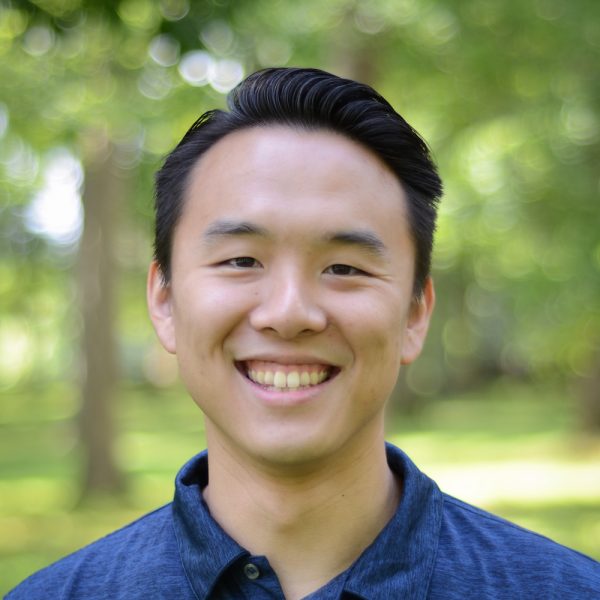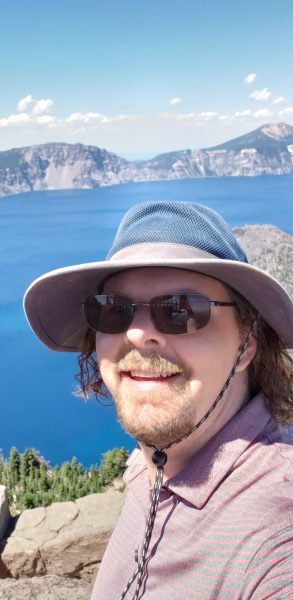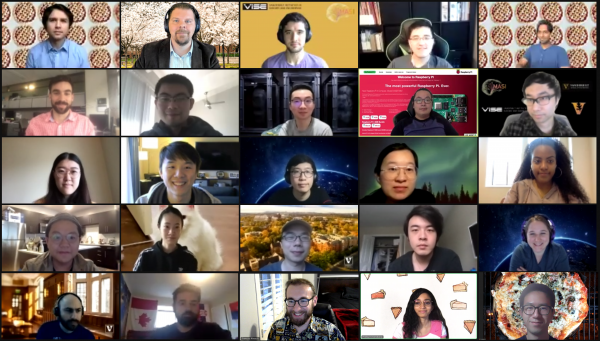By Siddhartha Dhiman and Emilie McKinnon

This MRM Highlights Pick interview is with Leon Y. Cai, Kurt G. Schilling, and Bennett A. Landman, researchers at Vanderbilt University in Nashville. Their paper is entitled “PreQual: An automated pipeline for integrated preprocessing and quality assurance of diffusion weighted MRI images”. It was chosen not only because the authors share their pipeline code with their paper, but also because they integrated emerging tools in their project that may be of interest to the MRM community, such as Singularity and BIDS.
To discuss this Q&A, please visit our Discourse forum.
MRMH: Could you tell us about yourselves and how you got involved in this project?
Leon: I am an MD-PhD student here at Vanderbilt, currently in the fifth year of the program. My focus is to look at multiscale structural aspects of neuroimaging and see how we can derive some meaning and learn about different disease states from those images. PreQual evolved as a project in the course of this activity.
Kurt: I’m a research assistant professor at Vanderbilt Medical Center. I got my PhD at Vanderbilt and did my postdoc at Vanderbilt Med Center in Dr. Landman’s MASI (Medical-image Analysis and Statistical Interpretation) lab. My research has focused on the microstructure and connectivity of the central nervous system, that is, the brain and spinal cord. My high-level research goals are to better image microstructure and connectivity. To do that, we need to make good images, and that, in turn, can be achieved by improving either the hardware and acquisition, or the image processing. This project focuses on improving the latter.
Bennett: I did my PhD in neuroimaging and diffusion tensor imaging (DTI), and for the last decade I have been leading a lab down here, looking at quantitative image processing largely in neuro; we do a lot of quantitative harmonization and modeling of diffusion. We love to develop and encourage technologies that allow integration of quantitative diffusion imaging across sites and protocols, so we can really drill into the biology. We are working on many AI-driven, biophysics and data synthesis techniques that will hopefully allow us to realize this harmonized quantitative diffusion process. We’re excited that PreQual is a solid next step in that evolution and a conversation piece that we can then build off of.
MRMH: Could you give us a brief overview of what your paper and PreQual are all about?
Leon: Essentially, the paper is an overview of a pipeline we built. We found that, for our purposes, there was a gap in the available toolboxes. There are many different ways you can preprocess diffusion imaging, and we wanted one that would set you up well for any type of analysis and quality assurance (QA) performed to ensure preprocessing is working sensibly. The paper details how we chose different toolboxes and packages that we were already familiar with, and put them together.
Bennett: Human time is expensive and valuable, while machine time is cheap. We were looking to develop a reproducible way of optimizing machine time and better exploiting more valuable human time. This was the aim that kickstarted the development of a set of analyses that the programs run on all the data that are acquired, even before anyone checks to see whether all the gradient directions were even sampled. Back in the day this took 30 hours of processing. But computers have gotten faster, and we’ve gotten cleverer, so now it takes less time. This paper takes that kernel of an idea and then really extends it with long-term reproducibility and stability through containerized processing, and then makes all that accessible in a command line interface that can keep going year after year.

Kurt: I think the biggest benefit of PreQual is the PDF file it outputs. It’s a beautiful way to check through hundreds of datasets in just minutes. Simply looking at it, I can quickly see whether outlier distortion correction worked, what the fractional anisotropy (FA) map looks like, and whether I get a big U-shape in the middle of the corpus callosum. It’s an awesome way to go through big datasets well, while at the same time having the assurance that a state-of-the art pipeline has been run on your data.
MRMH: Where does PreQual fit into the wide variety of DWI processing tools available?
Leon: We have all these awesome packages available that each do their thing really well. Our intention wasn’t to reinvent the wheel, but rather to exploit the advantages that these different tools afford — for example, we took advantage of the power offered by MRtrix and FSL. In this way, instead of all these different tools, we could just provide one that you run with simple commands, and it funnels all of the best things that we think are out there, saving users the need to learn about this fragmented space.
Kurt: The ISMRM Diffusion MR Study Group is involved in one of the consensus efforts on preprocessing. This is an area where we need to understand the contribution of different potential steps, different potential packages, and the different potential decisions that we make. I think there’s a lot to learn here. I’m excited to see where that effort will lead and also how PreQual evolves over time.
Bennett: I’d like to underline that the fragmentation of the field is actually a product of our success. In the last five or six years, there’s been a huge amount of creativity largely driven by the Human Connectome Project (HCP) project, new scanners, new acquisitions, and the willingness to use computation to fix imaging artifacts. These ideas have created a lot of different baselines and perspectives that aren’t really targeting all possible situations. With these consensus efforts and consensus pipelines, we’re able to reach a common baseline which we can then build off of. This allows us to target innovation and target improvements, so that we know where the field needs to go and where the next steps happen to be.
MRMH: How does PreQual integrate into your workflow?
Leon: There are two ways we use it on our side. One is where we manually run it in the command line, with default options. We do exactly what Kurt said, we look through the PDFs and make sure that our data look reasonable before we do any secondary modeling like tractography. The other is to integrate it with the infrastructure Bennett has built at Vanderbilt that automates clinical research on the imaging side.

Bennett: The Vanderbilt University Institute for Imaging Science (VUIIS) runs the extensible neuroimaging archiving toolkit (XNAT) server. With our code, called the Distributed Automation toolkit for XNAT (DAX), XNAT can communicate with our High-Performance Computing (HPC) Center. This allows us to run Docker or Singularity containers that implement protocols like PreQual and automate that processing. DAX will stage and process the data, so that we can add value to the imaging sequences. When you come back in to check whether it worked, you’re not scrolling through multivolume images trying to look for artifacts, you see these nice PDFs. And that explains the inspiration for PreQual.
MRMH: Are there any plans to integrate higher-level modeling like diffusion kurtosis imaging (DKI) into PreQual?
Leon: The way we see it, there are three steps to performing any diffusion analysis: acquisition, preprocessing, and model fitting. Our core focus was the second step, to make sure that we’ve preprocessed the data correctly. We support DTI not as a model per se, but as a way for us to carry out QA on some of the aspects of the diffusion data itself. Applicability of other models like DKI, SMT, or NODDI is going to really depend on the base-level data. We hope that PreQual will do the primary processing with QA, using the best tools we have, and then allow investigators to perform any secondary analyses based on the acquisitions.
MRMH: Last question, what do you enjoy doing outside the lab?
Leon: Outside of the lab, I hang out with my MSTP (Medical Scientist Training Program) class a lot, we’re very close. As places have been reopening, I’ve been trying to get back into exercising. I kickboxed for a bit in college so my friends and I have been doing that in the park — it’s an odd sight to see! The other big thing is I’m going to get a cat soon – I will be a first-time cat owner.
Kurt: I generally enjoy doing sports or a little bit of running here and there. A couple of members of the MASI lab are really big into biking so I’m considering starting training for a triathlon in Chattanooga next year.
Bennett: I enjoy anything outside, hiking, biking, walking, those kinds of things. Other than that, I spend most of my time with my kids shuttling them around, doing kid things. We had a cardboard gladiator duel last night!





